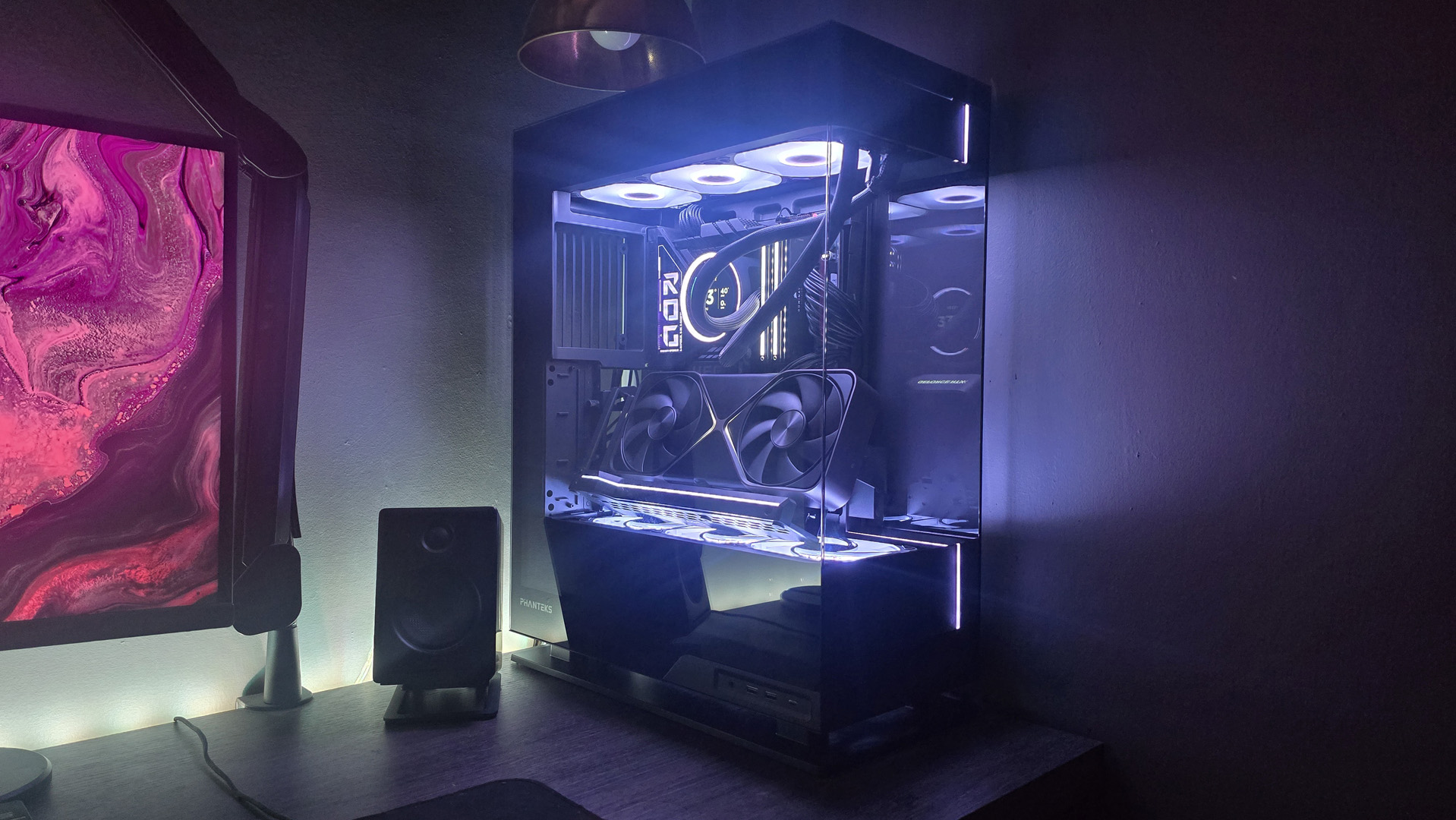Three Lane Highway: respect chaos, and other thoughts on surviving the midgame

Three Lane Highway is Chris' weekly column about Dota 2.
Last night I lost a game of Captain's Mode to a team that randomed two of their heroes. Their captain was AFK. Our captain wasn't AFK—he was, well, me—and I figured that I could easily counterpick a team that was lumbered with a Lina and an Elder Titan that they didn't plan to play. The draft didn't matter much, as it happened. They outplayed us from the moment the laning phase ended, fighting better, rotating better and generally closing us out of the game before we could bring our non-randomly-generated plan to bear.
There are two meagre reasons why this was not entirely an unbearable experience. The first is the single message their team transmitted in English over the course of the game: a lonely 'sick my duck', perhaps an Outkast reference, perhaps simply a wonderful typo. The other is that it was a relatively straightforward loss. These have seemed harder to come by, lately: I don't know about you, but for me and mine 6.83 has been the era of the throw.
It's simply easier to lose control of a lead than it used to be. It only takes a single teamfight to completely reverse the momentum of a game. Sometimes, it's less than that—the pick-off kill that means your next engagement ends disastrously, the sneaky Roshan attempt that you forget to check for. I don't feel like we've been losing more games than we generally do, but I definitely feel like we've thrown away more advantages.
It's no longer safe to snowball, and early leads need to be treated with a mixture of respect and caution—both by the team that's ahead and the team that's behind. The rewards for storming ahead in the early game aren't what they used to be, and transitioning into the kind of lead that actually ends the game takes skill and careful mitigation of risk. It's this latter element that I've been thinking about a lot recently. Dota 2 is a game of numbers, chance, percentages: most throws begin the moment you forget that.
Two weeks ago I talked about how a team that is in an advantageous position needs to identify their 'victory switch'—the set of collective strategic and psychological shifts that allow them to properly end a game. As part of that shift, it's increasingly important to define your team's relationship with the game's unpredictable elements.
A few weeks ago I read this guide to Hearthstone's Arena mode by VivaFringe. I don't play a lot of Hearthstone, but what drew me to it was this line:
The biggest gaming news, reviews and hardware deals
Keep up to date with the most important stories and the best deals, as picked by the PC Gamer team.
When you’re ahead, try to minimize variance. When you’re behind, try to maximize it.
What VivaFringe refers to as 'variance' could also be described as chaos or unpredictability. In Hearthstone, this is fairly easy to locate: there are a lot of random elements, from the behaviours of individual cards to the card-drawing process itself. 'Randomness' in Dota 2 is a little subtler. It means more than just Phantom Assassin's chance to crit or Chaos Knight's chance to get a four-second stun. It means everything your team can't directly control, from the positioning of enemy wards to the chance that the support you've spotted wandering alone is actually bait for a smoke gank.
Here's a scenario that demonstrates the type of variance that I'm talking about. One of your team's core heroes is mobile, good at taking down single targets, and has had a good start—Storm Spirit, maybe. Your advantage going into the midgame has been built on the back of lots of individual plays. From an even start, your team has more gold and experience because risks were taken—and paid off.
Let's say that Storm Spirit has a 80% chance of succeeding at any given solo kill attempt. That's an arbitrary percentage: it's intended to express the idea that a player with a lead will normally do well, but that something can always go wrong. When all else is equal, it is absolutely worth taking that 80% chance of success. As the game progresses, however, the one-in-five chance of failure means more. In the lategame, the 20% you can't control could mean ceding a huge gold and experience bounty to an enemy carry, a lengthy respawn, an expensive buyback, or any number of other penalties. Eventually, Storm Spirit's solo gambits will present a bigger opportunity to your opponent than they do to your own team, because your opponent has a meagre (but not impossible) chance to win big from them.
When you're ahead, then, you need to stop gambling. The odds haven't changed, but the scale of the reward has. Stop seeing it as an 80% chance to bump your K/D/A, and start seeing it as a 20% chance to lose the entire game. Secure your lead by 'minimising variance'. Prompt teamfights. Take other objectives. Transition in sync with the changing mathematical landscape of the game.
This is often the opposite of what a snowballing player wants to do, and the inverse is true of players who are on the defensive. Simply being behind suggests that conservative play is the only way to win: you lost out in the early game, so there's no way you're going to gamble with what you've got left. Well, that line of thinking goes both ways. As the enemy pulls ahead in gold and experience, you can do more with each kill you manage to get. The one consistent element of unpredictable situations in Dota 2 is that they are dangerous. People make mistakes. People die. This is the last thing you want if you're winning, but exactly what you want if you're behind.
'Maximise variance' in this regard by making plays that feel unsafe. Go for that smoke gank. Contest Roshan. Push a tower and force the other team to come meet you, then run away. Sometimes they will respond perfectly and you'll lose anyway, but that's unlikely. By taking chances you increase the chance that they'll slip up, and when they lose a vital core hero for a full ninety seconds without buyback you'll have just won your way back into the game.
To put it another way: only winners can throw a game. There's a choice you need to make, when you've built up that comfortable lead, to hold on to it. And when you're losing the best thing you can do isn't hole up in your base or repeatedly farm the two jungle camps left to you: it's to strike out and invite the other team to take a risk. Think about every time you've thrown a game because you wanted one more kill, or to show off, or to end the game because you need to make dinner—then encourage that mindset in them. Not the dinner thing, I guess. But if you want, try typing 'brb 1min need to eat delicious pizza' in all-chat. It can't hurt. Beats 'sick my duck', anyway.
If you remain unconvinced, please enjoy this brief four-minute musical essay on the importance of being mindful of the numbers powering every Dota 2 match you play.
10% luck. 20% skill. 15% concentrated power of will. 5% pleasure. 50% slam. 100% reason to remember the jam.
This is as close to a perfect mathematical summation of Dota 2 as you will ever get.
To read more Three Lane Highway, click here.
Joining in 2011, Chris made his start with PC Gamer turning beautiful trees into magazines, first as a writer and later as deputy editor. Once PCG's reluctant MMO champion , his discovery of Dota 2 in 2012 led him to much darker, stranger places. In 2015, Chris became the editor of PC Gamer Pro, overseeing our online coverage of competitive gaming and esports. He left in 2017, and can be now found making games and recording the Crate & Crowbar podcast.


